Top 12 AI Tools to Boost Sales Velocity
In this guide, we’ll explore the top AI tools that will help your team close deals faster and drive more revenue.

In sales, velocity is everything. The faster deals move through the pipeline, the quicker revenue grows. A Gartner case study shows how a software company increased its close rate from 20% to 80% and shortened its sales cycle by adopting the right AI tools.
But there’s a challenge: as sales teams grow, so does the complexity: more proposals, more touchpoints, and more time spent on tasks that don’t directly bring in revenue.
For sales leaders and revenue operations managers in enterprise sales, AI tools provide the solution. These tools automate tasks like RFP responses and lead qualification, helping your team close deals faster and spend less time on repetitive work. They speed things up and help your team make smarter decisions that move deals forward.
AI isn’t just a buzzword; it’s now a must-have for teams who want to accelerate sales velocity. In this guide, we’ll explore the top AI tools that will help your team close deals faster and drive more revenue.
Quick Look
- Sales velocity is crucial as moving deals faster directly increases revenue.
- AI tools automate tasks like RFP responses, lead qualification, and data entry, saving valuable time and allowing sales reps to focus on closing deals.
- The top AI tools like Inventive AI, Salesforce Einstein, and Clari speed up deal flow by providing real-time insights, predictive analytics, and contextual automation.
- AI integration with your CRM and internal systems helps streamline workflows and keeps your teams aligned.
- By using AI, sales teams can increase forecasting accuracy, improve collaboration, and reduce time spent on low-value tasks.
- Tracking sales velocity with key metrics ensures better decision-making and allows for continuous improvement of sales processes.
Why Sales Velocity Matters
Tracking sales velocity lets you see exactly how fast deals are moving and where you need to focus to improve. It’s about moving deals faster without losing quality, not just for the sake of speed but to keep your pipeline healthy and growing.
For sales teams, understanding velocity helps you prioritize efforts and allocate resources to the areas that need it most. It means more deals in less time, better forecasting, and staying ahead of the competition. In the end, tracking and improving sales velocity means more revenue and a more predictable sales process.
Why AI Tools Are Needed for Boosting Sales Velocity
Sales teams today face the constant challenge of closing deals faster while staying aligned across different departments. Here’s why AI tools are crucial for improving sales velocity and making sure your team delivers:

1. Automating Repetitive Tasks
Sales reps spend hours on tasks like responding to RFPs and following up with leads. These activities slow down the process and take away from high-impact work. AI tools can handle these tasks, freeing up your team to focus on relationships and moving deals forward faster.
2. Real-Time Insights
AI tools analyze customer data and deal progress in real-time, giving sales teams the insights they need to act quickly. Instead of waiting for reports or guessing what comes next, sales reps can make decisions based on current, accurate information, pushing deals forward without hesitation.
3. Accurate Forecasting
AI can improve sales forecasting by predicting outcomes with more accuracy. By analyzing past sales data, AI tools give teams a better idea of which deals are likely to close. This helps your team focus efforts on high-value opportunities, reducing time wasted on low-potential leads.
4. Better Collaboration
AI tools integrate with your CRM, project management platforms, and internal systems, creating a shared view of the sales process. This keeps everyone from sales to marketing and customer success on the same page, making it easier to close deals together and move them through the pipeline quickly.
5. Scaling Sales Operations
As your team grows, manual processes can become a bottleneck. AI tools automate the heavy lifting, allowing your sales team to scale operations without additional hires. This helps sales reps stay productive, handle more opportunities, and close deals faster, all while maintaining quality.
Now that we’ve seen why AI tools are essential for boosting sales velocity, let’s dive into the specific tools that can help your team move deals faster.
Read more: How Generative AI Can Help You Win More RFPs
Top 12 AI Tools to Boost Sales Velocity
Sales velocity drives success. AI tools give your team the edge to eliminate delays, accelerate decisions, and close deals faster. That’s how you can focus on winning. Here are the tools that can fast-track your sales cycle and deliver real results.
1. Inventive AI

Sales teams today juggle responding to RFPs, managing leads, and collaborating with legal and marketing, all while trying to close deals faster. Inventive AI is a leading AI-powered RFP response software that streamlines these efforts by automating routine tasks and providing tools that boost efficiency without sacrificing quality.
For teams focused on creating consistent, context-rich proposals, Inventive AI speeds up the process, allowing sales reps to focus on high-impact work and not repetitive, low-value tasks.
Best Features:
- AI-Powered Responses with Citations and Confidence Scores
Sales teams often waste time verifying content or tracking down the correct information for proposals. Inventive AI pulls from your internal knowledge base, generating responses that are accurate and auditable. Citations and confidence scores ensure every answer is reliable, saving time on corrections and building trust with your team. - Context-Aware AI Engine
Generic responses require constant customization, taking time away from other important tasks. Inventive AI uses deal-specific data, customer notes, and historical RFPs to provide responses that are directly aligned with the context of each deal. This cuts down on edits and keeps your proposals on target with minimal effort. - Full Tone and Style Control
Maintaining consistent tone and style across proposals can be challenging, especially when addressing different clients. Inventive AI lets you tailor the tone, length, and detail of each response, whether you need something formal, concise, persuasive, or technical. - Knowledge Hub with Real-Time Updates
Outdated or conflicting content leads to inconsistent proposals. Inventive AI centralizes knowledge across platforms like Google Drive, SharePoint, and Confluence. The system automatically updates content, flags outdated information, and ensures teams always use the most current data in proposals, boosting speed and consistency. - AI Agents for Competitive and Customer Research
Gathering competitive intelligence and personalizing proposals is time-consuming and often left to the last minute. Competitor Research Agent scans competitor content, helping your team stay competitive. Meanwhile, the Customer Research Agent analyzes buyer personas and deal data to customize responses for each prospect, eliminating manual research and giving your team strategic insights to respond faster. - Cross-Functional Collaboration Tools
Misalignment between sales, marketing, and legal teams leads to delays in the proposal process. Inventive AI integrates with tools like Slack and Salesforce, ensuring real-time collaboration and alignment across teams. This reduces bottlenecks and accelerates the process, making it easier to move deals forward without interruptions.
Pros:
- 90% faster response times, driving higher sales velocity
- Contextually accurate, consistent content for every proposal
- Centralized, up-to-date knowledge, eliminating manual work
- Real-time collaboration across teams, improving alignment
- Customizable tone and style, ensuring responses match client needs
Cons:
- Insufficient analytics in Inventive AI limits users' visibility into key performance metrics and trends.
Pricing:
Usage-based pricing: Users are charged based on the volume of RFPs processed or the level of AI-driven automation they use.
Best Use Case:
- Enterprise SaaS Sales: Automatically generating tailored proposals based on customer data, saving hours on manual work while keeping content aligned with each client's needs.
- Sales Teams with High Proposal Volume: Automating responses to frequent RFP questions while ensuring responses are accurate and consistent, driving faster deal closures.
- Cross-functional Collaboration: Seamlessly aligning sales, marketing, and legal teams with real-time updates and content collaboration, making the proposal process more efficient and less prone to errors.
Gartner Rating:
5/5 – Recognized for speed, accuracy, and enterprise-grade integration.
Testimonial:
"Inventive has completely streamlined my RFP process. We're now 90% faster, and our win rate has increased by 50%."
— Shikha Chauhan, Product Manager at Hexalog
2. Salesforce Einstein
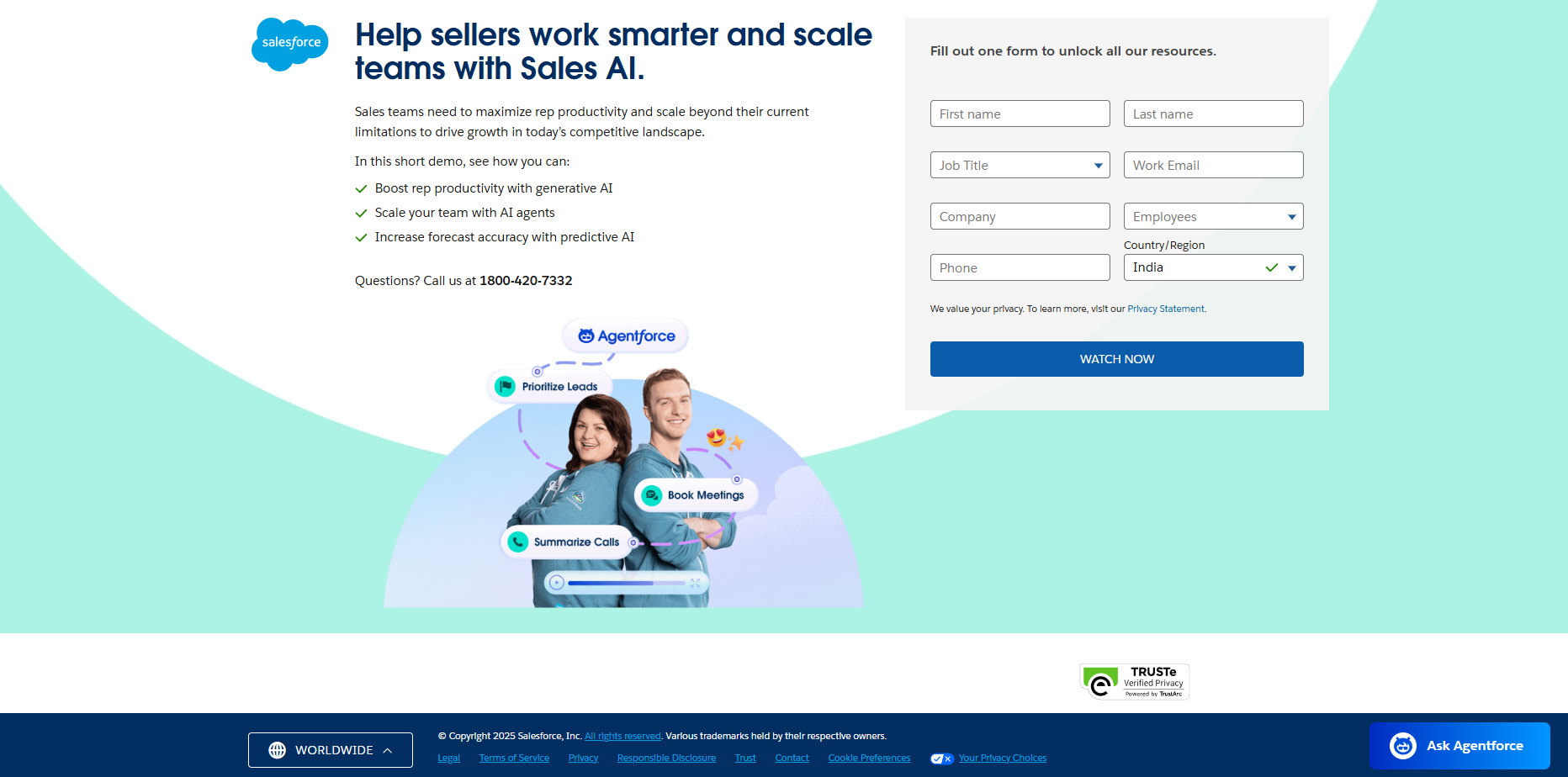
Salesforce Einstein uses AI-driven insights to help sales teams make better decisions. By leveraging data within Salesforce, it provides predictive analytics and actionable insights that streamline forecasting. This helps teams close deals faster by identifying the right opportunities and providing the necessary information to act quickly.
Best Features:
- Predictive analytics to forecast deal outcomes more accurately.
- AI-driven insights that help prioritize leads and opportunities.
- Integration with Salesforce CRM allows for a unified view of sales activities.
Pros:
- Improves forecasting accuracy.
- Provides actionable insights to prioritize high-value leads.
Cons:
- Salesforce dependency limits usability for teams using other CRM platforms.
- Complex integration process for non-Salesforce environments adds setup time.
- Unpredictable pricing based on Salesforce usage, making it difficult for smaller teams to forecast costs
Pricing varies based on Salesforce usage.
Gartner Rating: 4.3/5
3. Clari

Clari enhances sales forecasting with its AI-driven platform, giving teams real-time visibility into their pipeline. By using predictive analytics to prioritize the most promising opportunities, Clari accelerates deal closure and improves sales velocity by ensuring that reps focus on the right leads at the right time.
Best Features:
- Sales forecasting with predictive insights.
- Pipeline management to track deal progression.
- Real-time visibility into deal health and pipeline status.
Pros:
- Provides accurate sales forecasts.
- Improves pipeline visibility for better decision-making.
Cons:
- Integration required with existing CRM systems, leading to potential delays.
- Lacks flexibility for teams with unique or evolving sales workflows.
- No proposal generation feature, forcing teams to rely on third-party tools.
Pricing: Custom pricing based on team size and needs.
Gartner Rating: 4.7/5
4. Gong.io

Gong.io uses conversation intelligence to analyze sales calls, identifying key patterns and behaviors that impact deal success. It provides sales teams with real-time coaching insights, improving sales strategies and increasing conversion rates. This boosts sales velocity by ensuring reps refine their approach based on proven successful behaviors, closing deals faster.
Best Features:
- Sales call analysis with conversation intelligence.
- Deal intelligence and real-time coaching insights.
- Actionable feedback for improving sales tactics.
Pros:
- Improves sales coaching and provides real-time insights.
- Helps teams adjust sales strategies based on data.
Cons:
- Limited without call recordings, reducing value for teams who don’t record all interactions.
- Post-call analysis focus means no active support for real-time sales enablement.
- Integration gaps with some CRM platforms can hinder seamless workflow.
Pricing: Custom pricing based on team size.
Gartner Rating: 4.7/5
5. Outreach

Outreach automates sales engagement and allows for personalized outreach, ensuring your sales team can scale its efforts while keeping communication targeted and relevant. By reducing manual effort and improving outreach efficiency, Outreach helps sales teams accelerate their sales velocity and close deals faster.
Best Features:
- Sales engagement automation to speed up outreach.
- Email personalization to enhance communication effectiveness.
- Analytics for data-driven sales strategies.
Pros:
- Increases productivity by automating routine tasks.
- Provides detailed analytics to improve outreach strategy.
Cons:
- High cost, especially for small to mid-sized businesses.
- Steep learning curve for new users.
- Occasional technical issues, particularly when handling large volumes of data.
Pricing: Custom pricing based on team size and needs.
Gartner Rating: 4.4/5
6. Apollo.io

Apollo.io is an AI-powered lead generation platform that helps sales teams prospect more efficiently. It offers real-time prospecting and provides actionable insights into potential leads, making it easier to convert prospects into customers. By streamlining the lead-generation process, Apollo.io boosts sales velocity by speeding up the early stages of the sales cycle.
Best Features:
- AI-powered lead generation that helps teams discover new opportunities.
- Real-time prospecting to find the right leads at the right time.
- Lead enrichment to automatically gather and update information on prospects.
Pros:
- Increases prospecting efficiency, helping sales teams focus on the right leads.
- Provides actionable data for faster decision-making.
- Seamlessly integrates with CRM systems for smoother workflows.
Cons:
- Inaccurate data, with only 75% of phone numbers correct.
- Limited third-party integrations, restricting workflow automation.
- Occasional slowdowns during high-usage periods.
Pricing: Custom pricing based on business needs.
Gartner Rating: 4/5
7. HubSpot Sales Hub
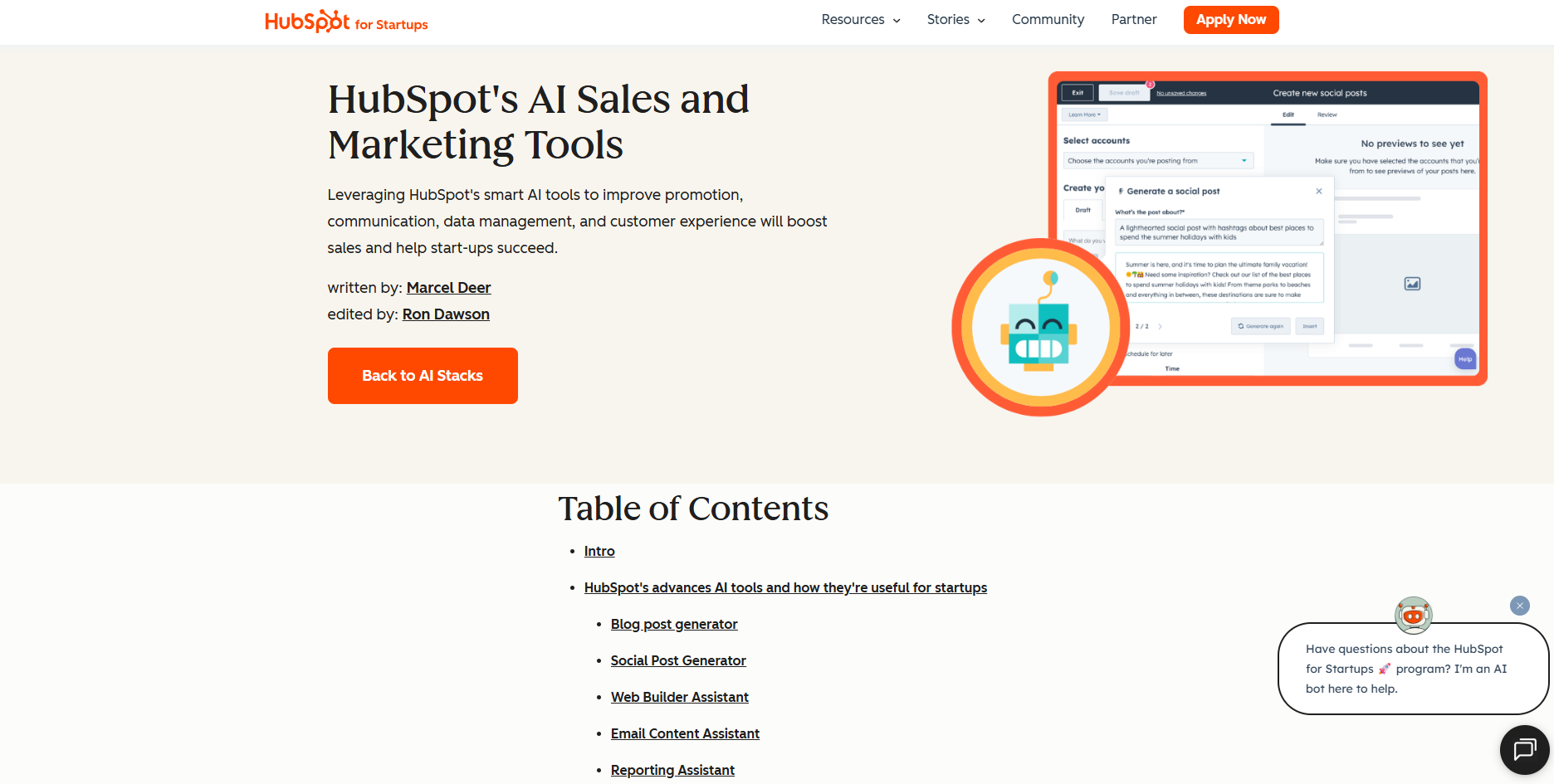
HubSpot Sales Hub is a comprehensive sales engagement platform integrated with its CRM system. It helps teams automate sales tasks, track communications, and manage the sales pipeline, making it easier for sales reps to engage leads and move deals through the pipeline. This results in faster deal progression, ultimately boosting sales velocity.
Best Features:
- Sales engagement tools that automate follow-ups and outreach.
- CRM integration for easy management of contacts and deals.
- Pipeline management for tracking deal stages and forecasting.
Pros:
- Offers a user-friendly interface, making it easy for teams to get started.
- Integrates seamlessly with HubSpot CRM for a complete sales solution.
- Customizable workflows that adapt to your business’s needs.
Cons:
- Limited customization in certain areas.
- Occasional syncing delays across integrations.
- Steep learning curve for new users.
Pricing: Custom pricing based on team size and features.
Gartner Rating: 4.4/5
8. People.ai
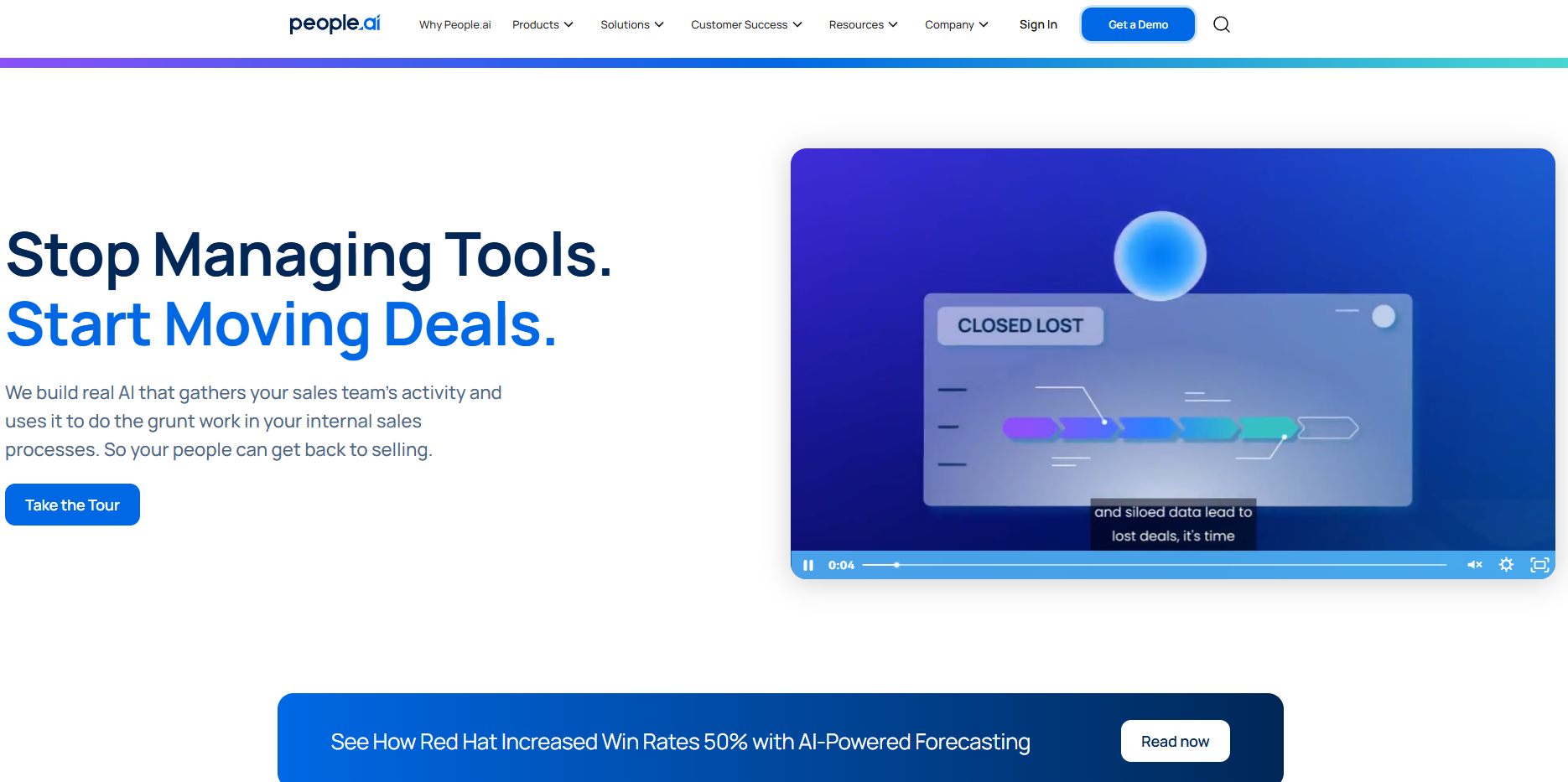
People.ai provides revenue intelligence to sales teams, helping them understand the relationship between activities and outcomes. By capturing key insights from their sales data, teams can optimize their efforts and improve sales forecasting. This helps increase sales velocity by focusing on the most effective sales activities that drive quicker closures.
Best Features:
- Revenue intelligence to track key sales activities.
- Sales analytics to measure team performance and identify growth opportunities.
- Salesforce integration to keep data centralized and actionable.
Pros:
- Improves forecast accuracy and provides data-driven insights.
- Streamlines reporting and data analysis for more actionable insights.
- Real-time performance tracking to ensure targets are met.
Cons:
- Primarily suited for Salesforce users.
- Call data delays, with reports taking a day or two to reflect accurate information.
- Limited customization for specific sales processes.
Pricing: Custom pricing based on team size and features.
Gartner Rating: 4.0/5
9. ZoomInfo
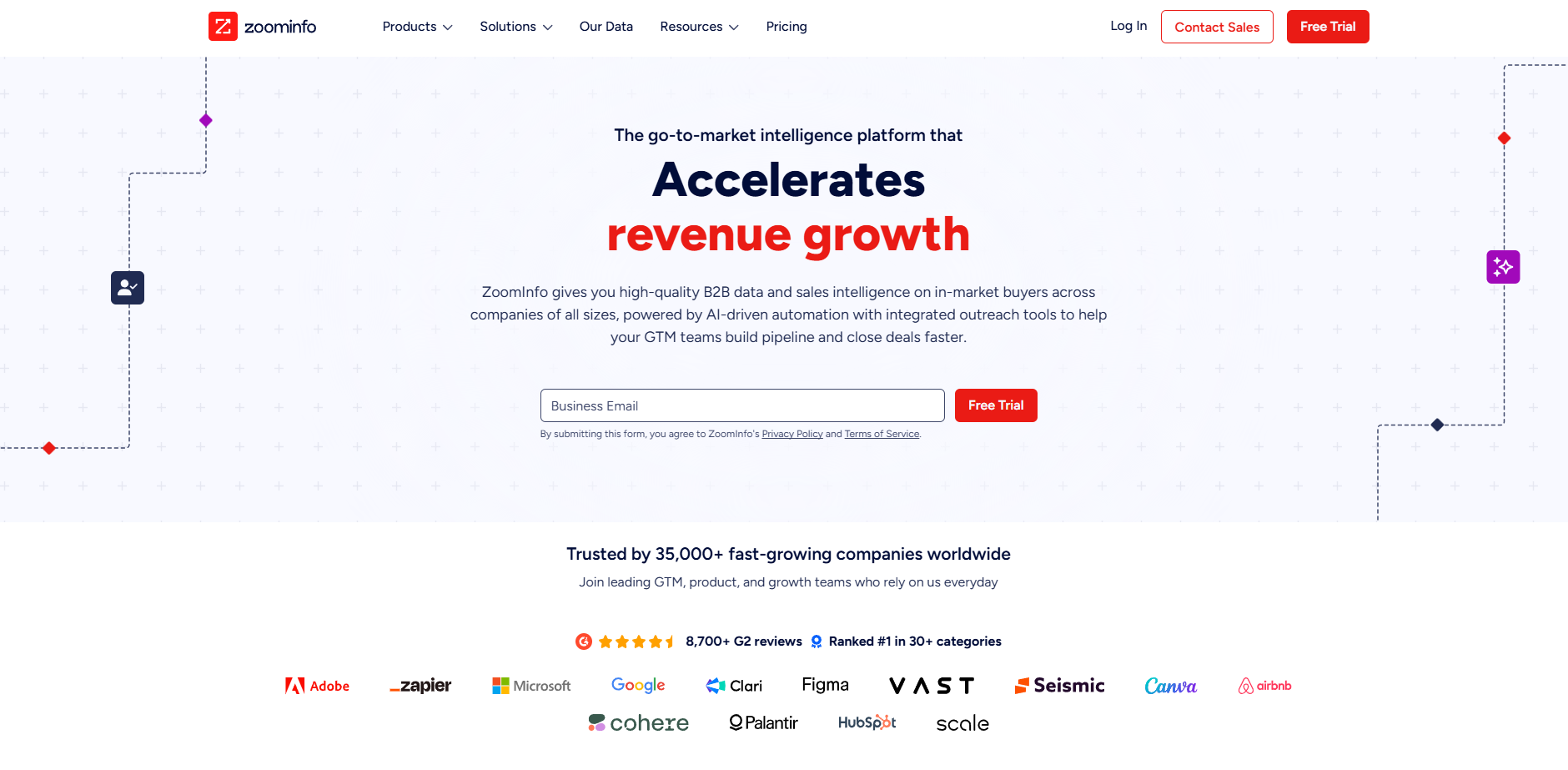
ZoomInfo is an AI-powered sales intelligence tool that provides real-time lead enrichment and prospecting capabilities. It helps sales teams uncover new leads, gather key data, and accelerate outreach to potential clients. By providing up-to-date, actionable intelligence, ZoomInfo increases sales velocity by ensuring reps can target high-potential prospects more quickly.
Best Features:
- Sales intelligence to gather in-depth insights into leads.
- Lead enrichment that automatically updates prospect data.
- Real-time data on companies and decision-makers for smarter outreach.
Pros:
- Provides deep insights into leads, improving prospect targeting.
- Increases conversion rates with high-quality data.
- Offers a wide database of leads and decision-makers.
Cons:
- Inaccurate data, with updates often less reliable than LinkedIn.
- Requires CRM integration for full utilization.
- Lacks full sales cycle management, requiring additional tools.
Pricing: Custom pricing based on usage and team size.
Gartner Rating: 4.2/5
10. InsideSales.com
InsideSales.com uses AI-driven sales acceleration and predictive analytics to help sales teams prioritize and close deals faster. The platform provides insights into lead behavior and helps reps identify high-priority leads for engagement, speeding up the sales cycle and boosting sales velocity.
Best Features:
- Predictive analytics to prioritize deals and leads.
- AI-driven sales acceleration to speed up the sales cycle.
- Real-time lead scoring to identify the most promising opportunities.
Pros:
- Provides actionable insights for faster deal closure.
- Improves lead prioritization for better decision-making.
- Increases efficiency by automating repetitive tasks.
Cons:
- Initial setup required to integrate with CRM and data sources.
- Limited functionality outside of predictive analytics and sales acceleration.
- No support for proposal generation or advanced sales content automation.
Pricing: Custom pricing based on business needs.
Gartner Rating: Not Found
11. Conversica
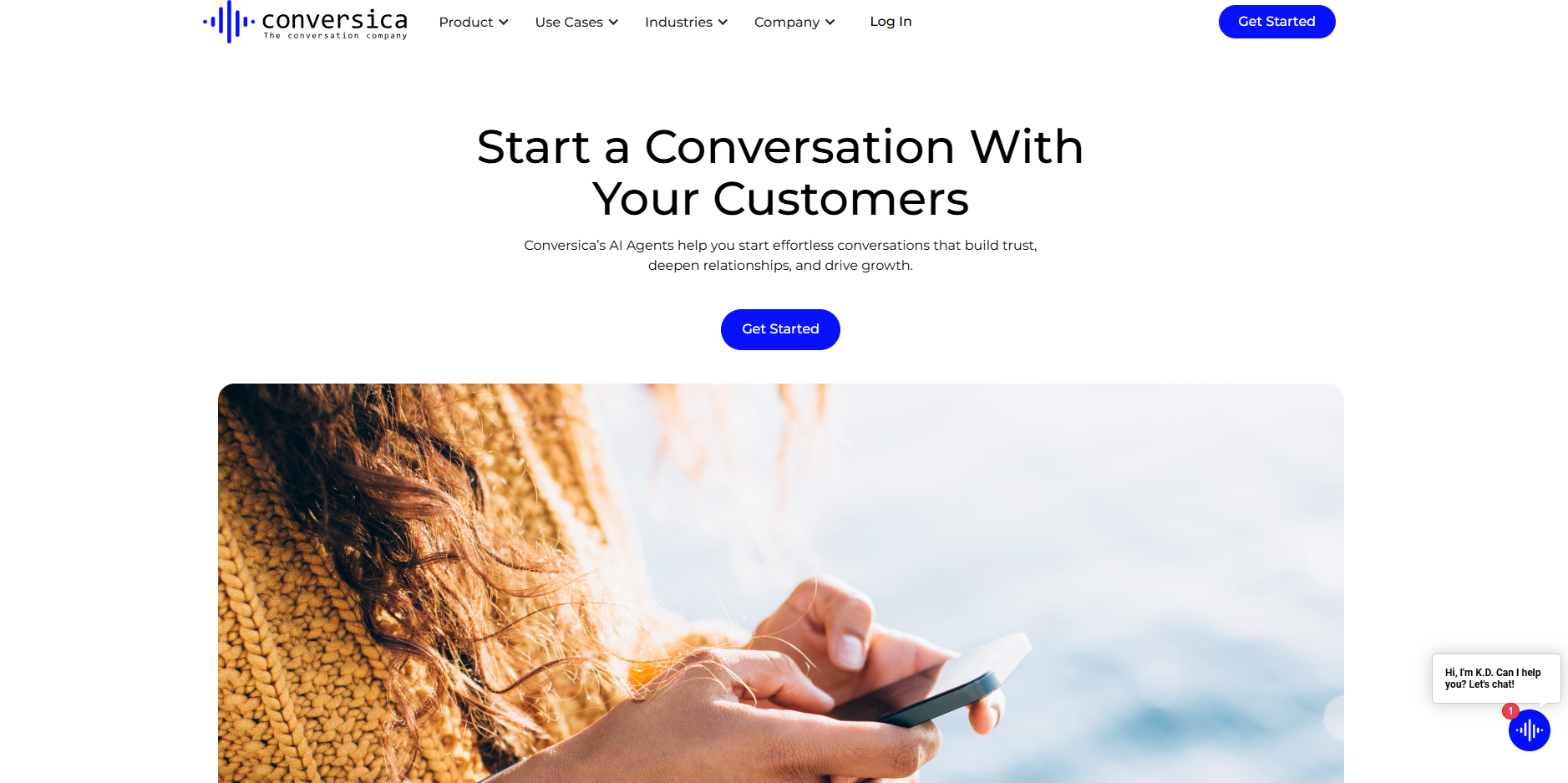
Conversica offers an AI sales assistant that automates lead follow-up, ensuring no lead is left behind. By using AI to engage prospects, schedule meetings, and move deals forward, Conversica boosts sales velocity by ensuring that follow-up tasks are handled promptly and efficiently, reducing delays in the sales process.
Best Features:
- AI-powered assistant for lead follow-up.
- Automates repetitive tasks, allowing sales reps to focus on high-value activities.
- Customizable workflows for different types of leads and sales cycles.
Pros:
- Ensures consistent lead engagement.
- Saves time by automating lead nurturing.
- Increases conversion rates by ensuring no leads slip through the cracks.
Cons:
- Primarily focused on lead follow-up, lacking full sales cycle automation.
- Limited functionality outside of lead engagement.
- Pricing can be high for smaller teams or less complex sales processes.
Pricing: Custom pricing based on usage and features.
Gartner Rating: 4.5/5
12. PandaDoc
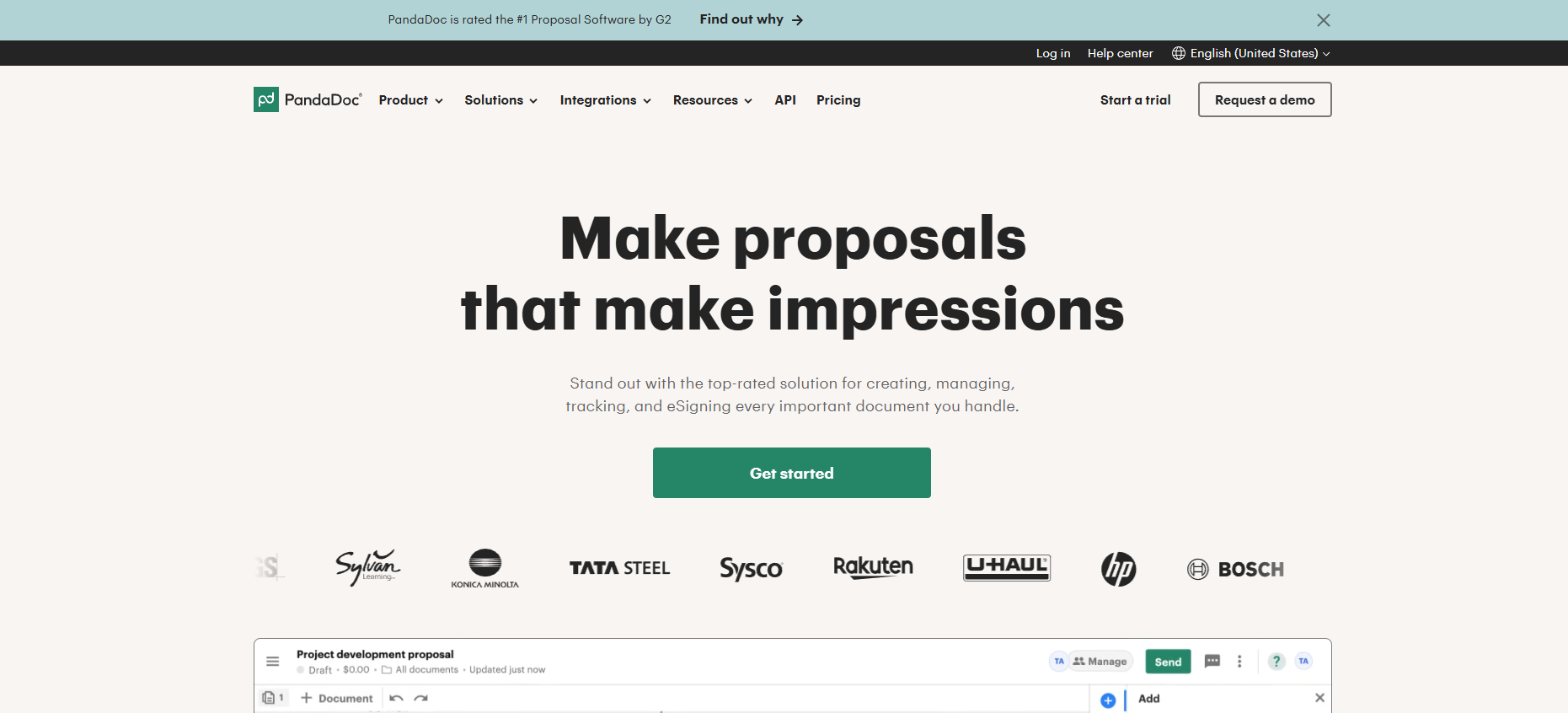
PandaDoc automates the creation and management of sales documents, including proposals and contracts. It speeds up proposal generation, improving the overall sales process and reducing time spent on manual document handling. This boosts sales velocity by minimizing administrative delays and helping sales reps close deals faster.
Best Features:
- Document automation for quick proposal generation.
- Sales proposal creation with customizable templates.
- E-signatures and document tracking to ensure fast approvals.
Pros:
- Reduces proposal generation time, increasing sales velocity.
- Offers customizable templates for different sales scenarios.
- Streamlines the document approval process.
Cons:
- Primarily focused on document management, requiring integrations for a full sales workflow.
- Lacks AI-driven proposal generation and content insights.
- Limited collaboration features beyond document creation.
Pricing: Custom pricing based on team size and usage.
Gartner Rating: 4.6/5
Suggested Alternative:
Inventive AI provides full sales cycle automation, from generating context-rich proposals to real-time collaboration across teams. It eliminates the need for additional integrations by offering built-in CRM integrations and proposal generation tools, unlike Outreach, which requires external tools for proposal automation.
With so many tools available, how do you know which one is right for your team? Let’s walk through how to choose the best software for accelerating your sales velocity.
Best Practices for Using AI Tools to Boost Sales Velocity
AI tools can accelerate sales velocity, but only when used the right way. Here are the best practices to make the most of these tools and boost your team's performance:
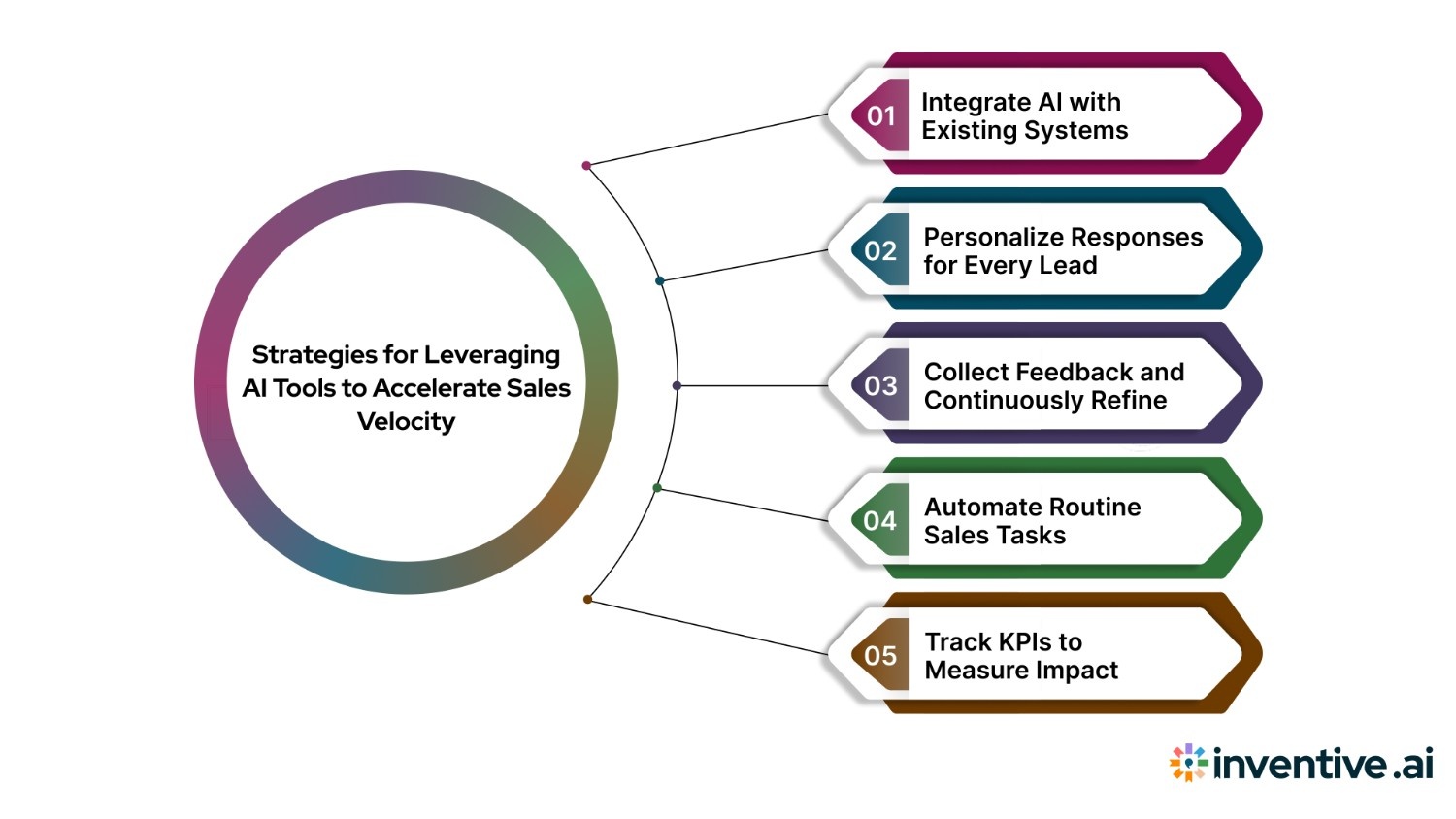
- 1. Integrate AI with Existing Systems: AI works best when it seamlessly connects with your CRM and other sales tools. Integrating AI into your existing systems eliminates manual work, ensuring that data flows smoothly across platforms. This allows your team to focus on high-impact tasks, improving both efficiency and accuracy.
- 2. Personalize Responses for Every Lead: Don’t let AI produce generic responses. Make sure AI tools pull in customer-specific data to tailor responses based on the prospect's needs and interactions. Personalized outreach helps build trust and engagement, leading to quicker conversions.
- 3. Collect Feedback and Continuously Refine: AI tools improve with feedback. Regularly review AI-generated outputs and adjust them based on feedback from your sales team. This ensures the tool stays aligned with your team’s workflow and business goals, improving its effectiveness over time.
- 4. Automate Routine Sales Tasks: AI should handle repetitive tasks like data entry, follow-ups, and initial prospecting. This frees up time for your team to focus on selling and closing deals. By automating these tasks, your sales team can operate faster and with more precision.
- 5. Track KPIs to Measure Impact: To ensure AI tools are improving sales velocity, track key metrics such as deal cycle time, lead conversion rates, and response time. Regularly measuring performance helps identify what’s working and what needs adjustment to continuously improve sales efficiency.
Read more: How to Write an Effective RFP Response.
Let’s see how you can track your sales velocity to get the desired sales output.
How to Track Sales Velocity to Close More Deals
Tracking sales velocity isn’t just counting numbers, but understanding how fast deals move through your pipeline and pinpointing where things slow down. Here’s how you can track it with precision and why it matters:
- Monitor Deal Cycle Time from Start to Close: Track how long it takes for a deal to move from one stage to the next. Break it down by steps—discovery, qualification, proposal, etc. If one stage consistently drags, you’ll know where to focus. Shorter cycles mean more deals closed in less time.
- Track Lead Conversion Rate and Lag Time: Measure how long it takes to convert leads and where they tend to drop off. High conversion rates with low lag times indicate that your process is solid. If there are bottlenecks, figure out why certain leads get stuck.
- Assess Lead Response Time: How fast does your team respond to new leads and follow-up requests? A quick reply can mean the difference between winning and losing a deal. The faster you engage, the more likely you are to keep prospects interested.
- Analyze Sales Rep Activity and Time Allocation: Look at how much time your reps spend on actual selling versus admin work. If they’re bogged down by tasks like data entry or scheduling, sales velocity will suffer. Use tools to automate low-value tasks, so your reps can focus on closing.
- Measure the Impact of AI on Response Time: Track how AI tools impact the time it takes to generate proposals and responses. If you’re automating RFPs or follow-ups, measure how much faster you can move prospects through the pipeline. AI should cut down time on repetitive tasks so your team can focus on building relationships.
- Set Benchmarks and Track Consistency: Sales velocity should be predictable. Set benchmarks based on historical data and track how you’re doing month over month. If your velocity drops, it’s a sign that something’s off, whether it's team performance or external factors like lead quality.
Why Choose Inventive AI to Maximize Your Deals and Win More
As sales teams face increasing pressure to close deals faster, the tools they use become critical in defining their success. Inventive AI stands out as the industry leader because it doesn’t just automate; it enhances the sales process with context-driven insights, real-time updates, and an AI-powered knowledge hub that integrates seamlessly into your existing systems.
Inventive AI accelerates your sales cycle by increasing your sales velocity by 90%, ensuring that your proposals are not only quick but highly relevant and tailored to each prospect. With faster response times, it shifts the focus from time-consuming manual tasks to value-generating activities, helping you win more deals with less effort.
Why settle for tools that merely assist when you can have a platform that drives your success? Choose Inventive AI to maximize your deals, accelerate your sales cycle, and stay ahead in an increasingly competitive sales pitch.
FAQs
What is sales velocity, and why is it important?
Sales velocity is the speed at which leads move through your pipeline, from initial contact to deal closure. It directly affects revenue growth and helps sales teams prioritize the right deals and resources.
How do AI tools improve sales velocity?
AI tools accelerate sales velocity by automating repetitive tasks, providing data-driven insights, and ensuring personalized engagement with prospects. This enables sales teams to close deals faster with more accurate information.
What are the key benefits of using AI tools for sales?
AI tools help sales teams save time, improve decision-making with real-time insights, and enhance collaboration across departments. They allow teams to focus on closing deals rather than managing manual tasks.
How does Inventive AI help sales teams close deals faster?
Inventive AI speeds up the sales cycle by automating RFP responses, providing context-aware insights, and ensuring proposals are always up-to-date and accurate, cutting response times by 90%.
Can Inventive AI integrate with my existing sales tools?
Yes, Inventive AI seamlessly integrates with platforms like Salesforce, Slack, and Google Drive, ensuring that your team can continue using the tools they rely on while benefiting from AI-driven acceleration.


